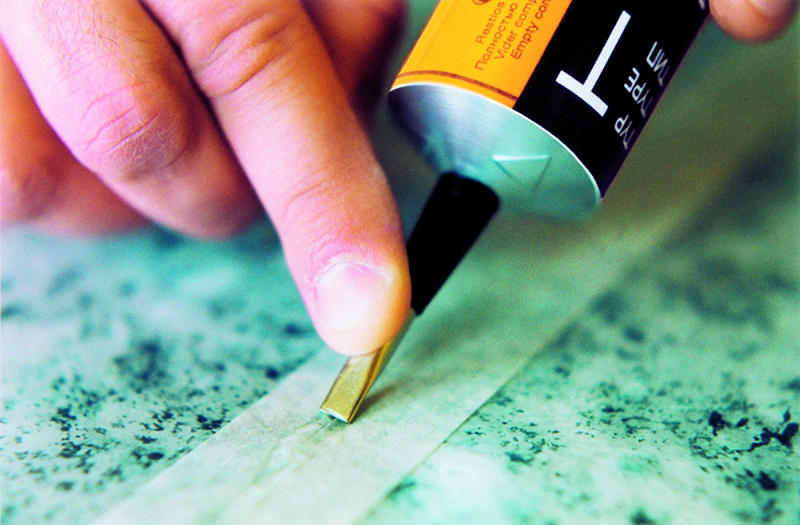An oven is a necessary and very important part of any kitchen. Modern ovens are high-tech units equipped with many additional functions - convection, microwaves, grill, self-cleaning. In their arsenal there are many programs that allow you to choose the optimal modes for cooking certain dishes. When choosing a device, not only the gastronomic preferences of the owners play an important role, but also the size of the built-in oven.
Content
- Types of ovens
- Gas or electric - advantages and disadvantages
- How to choose an oven
- Standard dimensions for electric ovens
- Width
- Depth
- Height
- Standard sizes of gas ovens
- Width
- Depth
- Height
- Dimensions of large ovens
- Dimensions of small ovens
- Ovens of non-standard sizes
- Dimensions of ovens with hob
- Niche and cabinet sizes for built-in ovens
- How and where to install
Types of ovens
All devices can be divided into two large groups - according to the control method. Ovens can be:
- dependent - functioning only in alliance with the hob, on which the controls are located;
- independent - work offline. Such devices can be located anywhere in the kitchen, since the control panel is located on the front part.
Ovens are also classified by heat source:
- gas;
- electrical.
Each of these options has its own pros and cons, which can be decisive when choosing kitchen appliances.
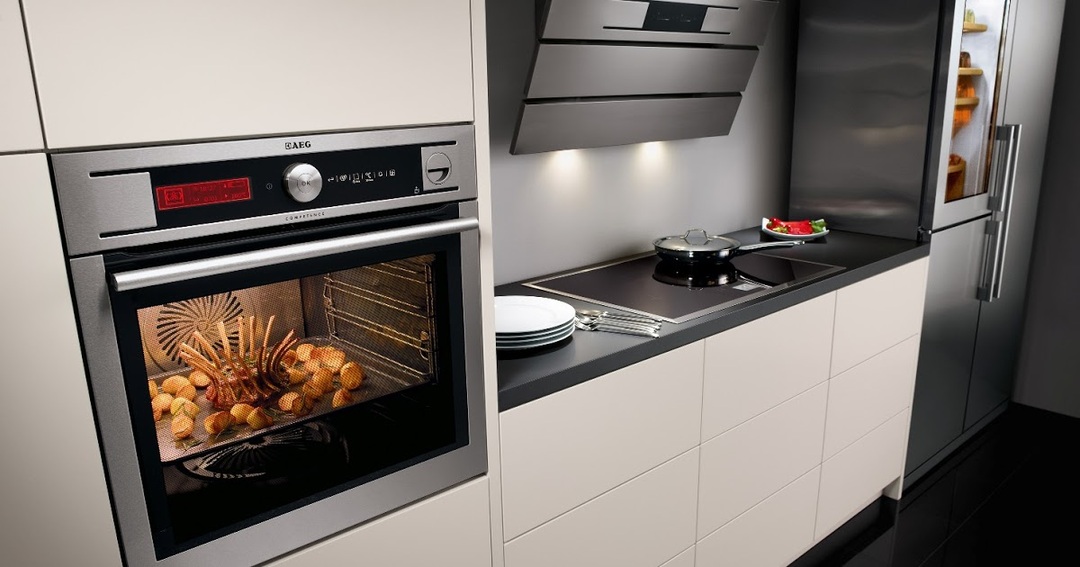
Gas or electric - advantages and disadvantages
The gas oven is heated by a burner located at the base of the chamber. This option is not able to provide uniform heating. It is quite difficult to achieve a golden brown crust in such an oven. Most often, a burnt bottom is obtained in combination with an unbaked top. However, the introduction of additional devices - such as a grill in the upper part of the chamber or a fan that increases the uniformity of the distribution of hot air, are able to neutralize this flaw.
In electrical counterparts, there are several heating elements - at least 2 - upper and lower, which are capable of working both in a "team" and autonomously.
What are the advantages of a gas oven?
- It allows you to save energy and money for the owner - gas is much cheaper than electricity.
- It copes well with basic tasks - it can bake, stew, fry, dry - in the presence of convection. However, simultaneous cooking on several levels is not available for him.
- Most of the models have a budget cost.
- Provides safety - with the gas control function. Any gas leak will be immediately detected and blocked.
- Always at your service - dinner will be ready even when the power is off.
- Easy start-up thanks to automatic ignition.
Pros of an electric oven
- Uniform heating of the chamber due to the presence of several heat sources in the structure.
- The many automatic modes and additional functions are a real boon for fans of cooking.
- The ability to accurately set the required temperature, mode and cooking time.
- Safety - in comparison with the gas equivalent.
- Self-cleaning function - pyrolytic or catalytic. At the first, cleaning is carried out by burning carbon deposits at a temperature of 500 degrees. The second method allows you to clean the cabinet while cooking. Special built-in elements help to break down fat into carbon dioxide and water.
With all its advantages, an electric oven also has disadvantages, including:
- the need to match the level of power consumption of the device to the power of the electrical network;
- rising energy costs;
- high cost of equipment.
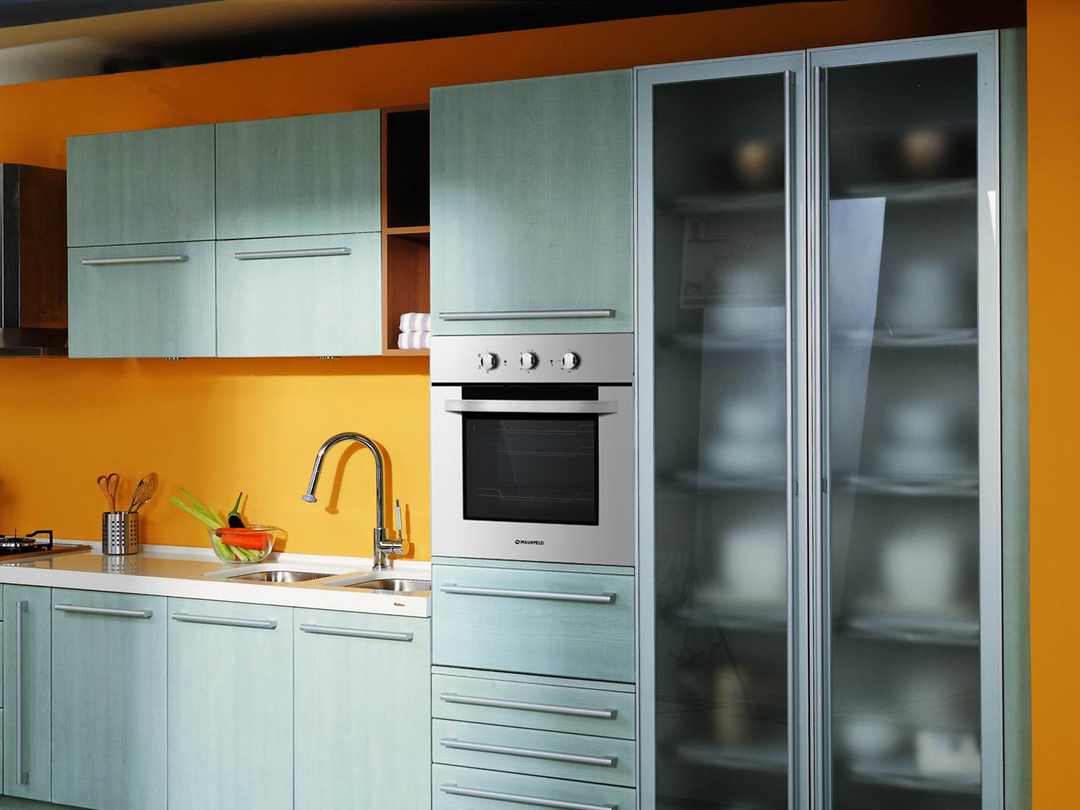
How to choose an oven
The choice of a new stove should be approached with the utmost responsibility. The comfort and convenience of the hostess when using it, the quality and variety of dishes will depend on this. When buying, it is necessary to take into account the dimensions of the kitchen set, the ability to connect to networks.
When buying, it is important to consider the following points:
- when replacing the oven, the dimensions of the old and new appliance must be identical. Thanks to this, you do not have to change furniture or adjust it to new dimensions;
- number of family members - a standard oven may not be enough to cook large amounts of food at the same time. If the family is large, it is better to give preference to chambers with increased height - in such ovens, you can place more baking sheets, and thus save cooking time;
- dimensions of the kitchen - it will be difficult to place a spacious oven in a small room, since it will “eat up” an already scarce space. A miniature appliance is perfect for a small kitchen;
- the design of the product must correspond to the chosen style and color scheme;
- additional functions - built-in microwave oven, double boiler, grill, plate warming shelf - their presence is strong increases the cost of devices, but has a positive effect on the quality of food, makes the cooking process as simple as possible and comfortable;
- additional drawers - if there is nowhere to place pans and pots, you can choose a model in which storage places will be equipped;
- self-cleaning function - will save a lot of time, effort and money for the purchase of household chemicals;
- Russian-language instruction, which will make it easy to understand the settings;
- devices that make the cooking process more comfortable - display, timer, clock;
- system of locking buttons, doors - to ensure the safety of life and health of children.
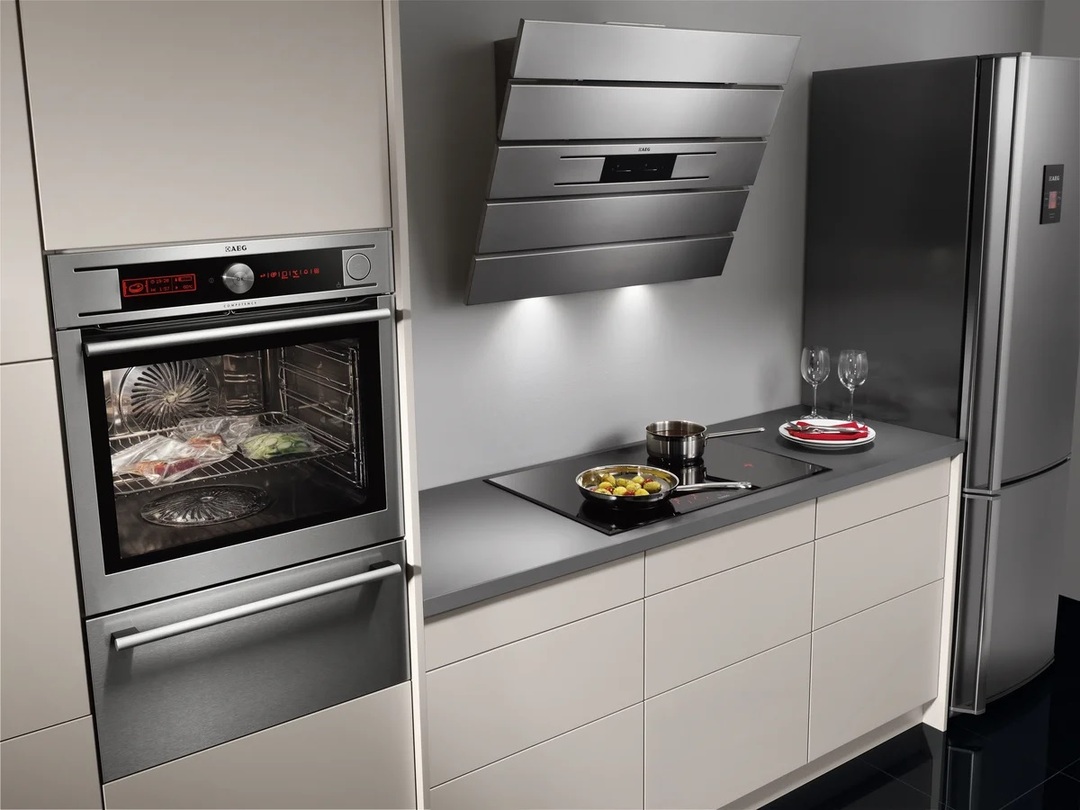
Standard dimensions for electric ovens
One of the main parameters when choosing a technique is the dimensions of the oven. The appliance should fit perfectly into the kitchen set. Manufacturers offer a wide range of different-sized models.
If the oven is used infrequently, it is more advisable to give preference to a small, compact version. However, keep in mind - the functionality of a miniature stove is often limited. If additional functions are important to you, it is better to purchase a broiler with standard dimensions.
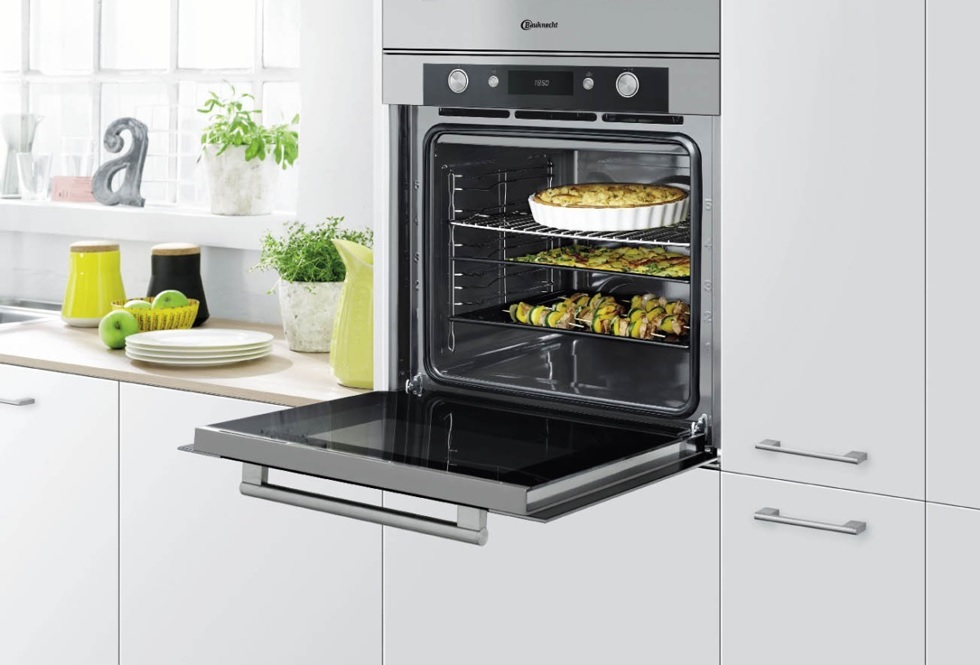
Width
Standard ovens are 60 cm wide. This is a generally accepted parameter that all manufacturers of this product adhere to. There are a huge number of options for ovens of this size range on the market. In this regard, it will not be difficult to choose the optimal device for any design, to quickly replace old equipment. Such ovens are easily built into the cases of typical kitchen sets, so you don't have to order expensive furniture of non-standard sizes for them.
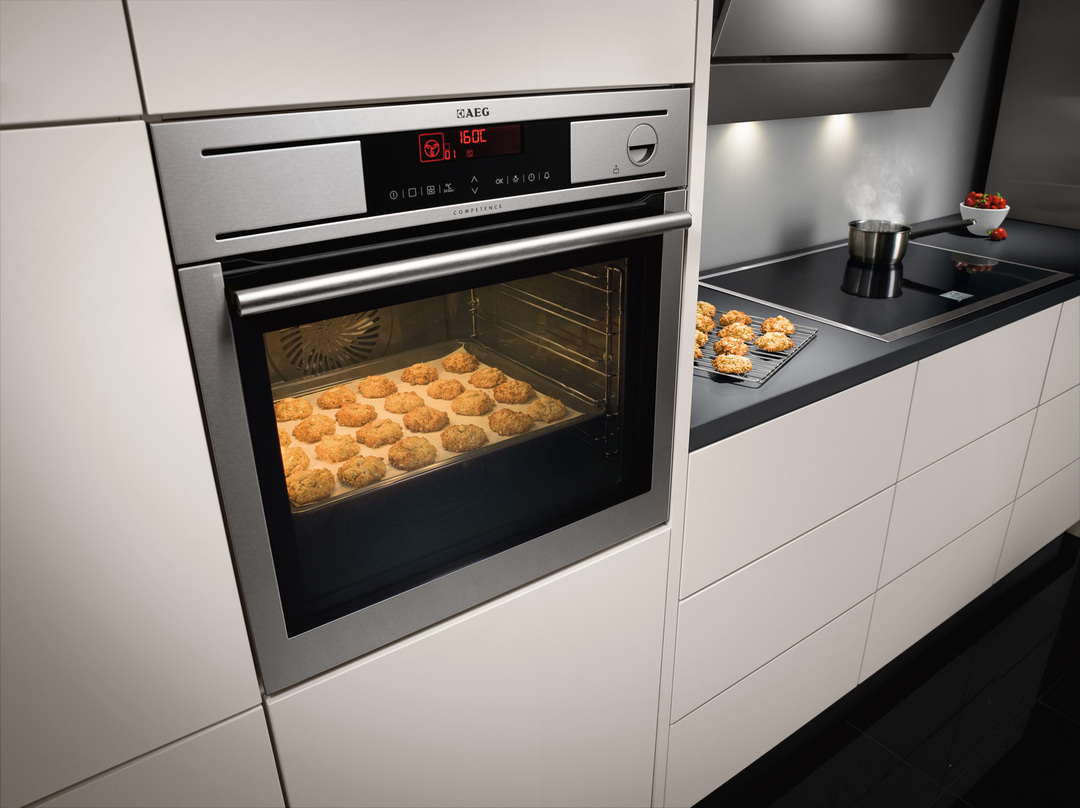
Depth
An oven depth of 60 cm is considered optimal. It matches perfectly with the standard width of the worktop, which is also 60 cm. Such a surface allows you to conveniently place the necessary products for cooking, small household appliances, and provide a sufficient distance to the cabinets of the upper tier. That is why standard headsets provide a worktop of this width.
Such a depth of the oven allows you to use a spacious baking sheet, which significantly speeds up the cooking process. An oven with such parameters will organically fit into the compartment under the hob, and into a vertical cabinet or kitchen column.
In the case of limited space, you can choose models with a depth of 50-55 cm. For small kitchens, compact options with a depth of 45 cm are optimal.
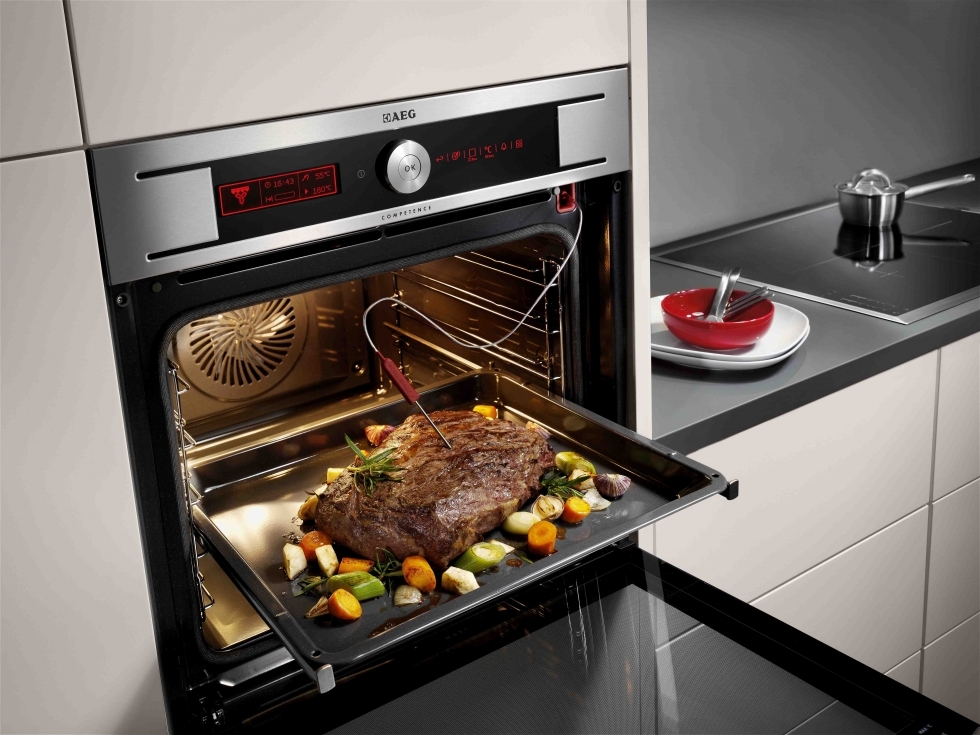
Height
The most common height for electric ovens is 60 cm. The lion's share of devices is produced with just such parameters. However, nothing prevents you from choosing an oven with a height of 70 or 90 cm with one large or two compact baking compartments. It is recommended to use such models in kitchens with a minimum area of 9 sq. m. If the room does not have similar parameters, you should choose smaller devices.
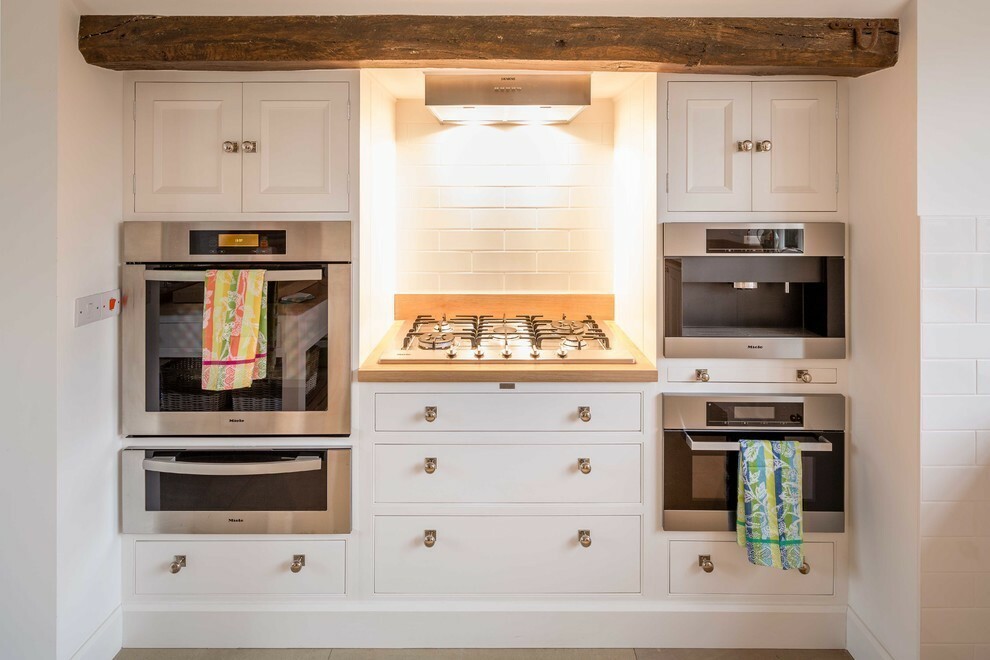
Standard sizes of gas ovens
In the process of purchasing gas ovens, it becomes clear that they come in different sizes. Models with a depth of 50-55 cm and a width of 60 cm are considered standard. However, devices with these dimensions are not always easy to place in the kitchen, because after installing the furniture, there may not be enough space to build in the oven, or, conversely, there may be an excess of it.

Width
According to generally accepted standards, the width of a classic oven should be 60 cm. When integrating the device into a slightly larger cabinet, the only problem will be the violation of aesthetics and the formation of voids. If the free space is slightly less, this will make the installation of standard equipment impossible. In this case, you can purchase another option - a narrower one. It is for such situations that manufacturers have provided models with a width of 40, 45 cm. However, it is quite difficult to find such an option - as a rule, at best, one or two varieties of goods of this category are available in the store, or they are completely absent. This technique is the best option for embedding in small-sized kitchen furniture sets designed for a small space.
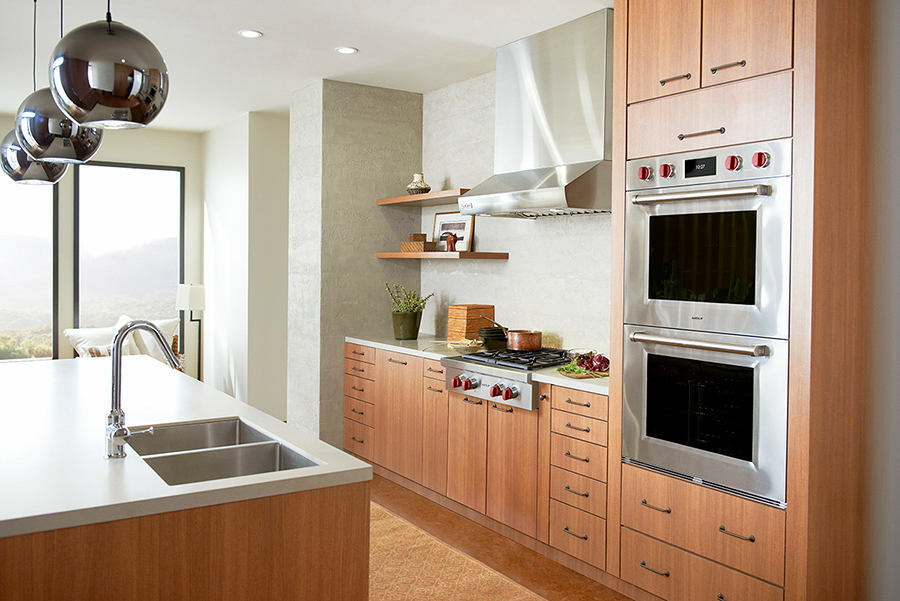
Depth
The standardized depth for gas ovens is 60 cm. Less often, this parameter is 55 cm. This size is considered optimal - it was carefully selected by manufacturers based on the results of a huge number of studies and experiments. It is this depth of the oven that is necessary for high-quality baking of the inside and outside of the food. Therefore, manufacturers rarely deviate from this parameter. There are products on sale with a shallow depth of 45 cm, but they are not in high demand due to their impracticality.
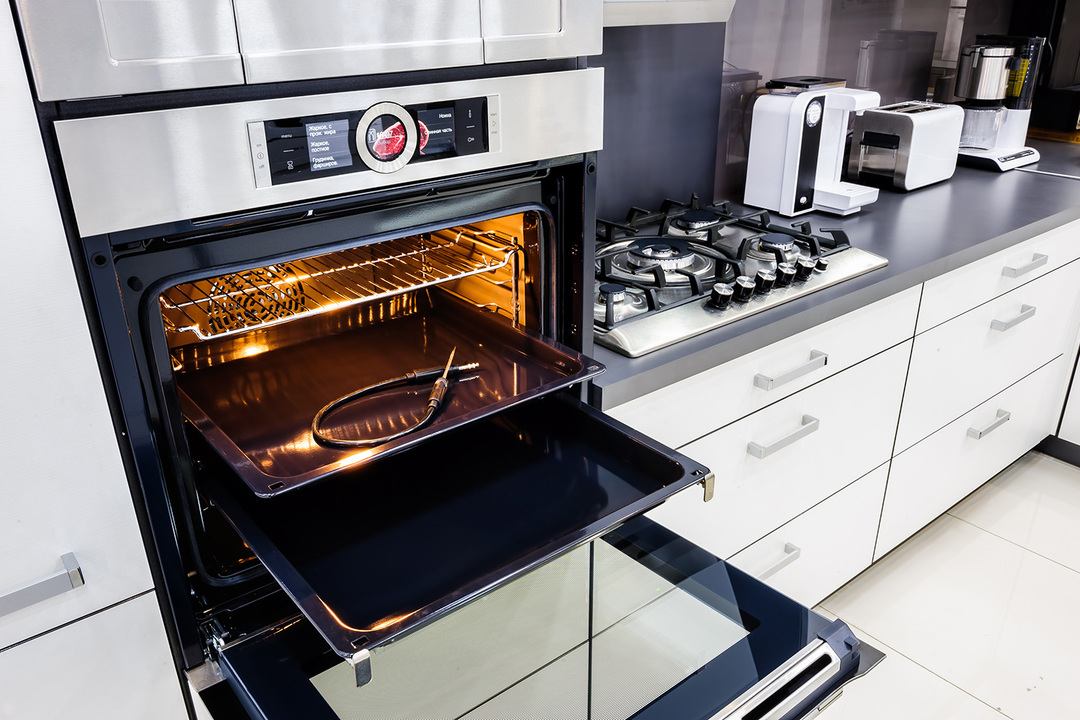
Height
The height of a standard gas oven is 60 cm. In the case of the presence of additional functions, this parameter may increase, since it is simply impossible to save it. Manufacturers strive to satisfy all possible needs of buyers, therefore they increasingly offer non-standard models, the dimensions of which can satisfy any request.
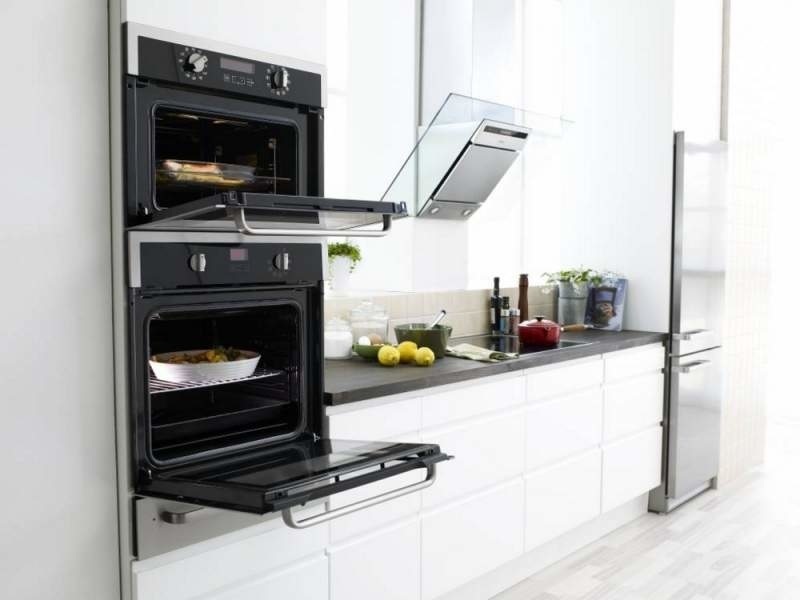
Dimensions of large ovens
For a large family, the standard model may not be enough. Especially if the house is always happy to receive close and distant relatives, friends and acquaintances. In such cases, an enlarged oven will come to the rescue. It will allow you to conveniently place and prepare more food in one go or several different dishes at the same time.
Large ovens include models with a width of approximately 90 cm. They have standard heights and depths, but their chamber capacity is well above average. The volume of such products can be from 80 liters, although most often it varies from 110 to 120 liters. In such an oven, you can easily cook a whole large bird or fish - for example, a pike, bake all the cookies or several cake layers at once in one go.
Another option for a large oven is devices that are increased by increasing the height. Such models can be 72 cm high. In addition, the devices can be doubled. The total volume of the two combined chambers exceeds 200 liters.
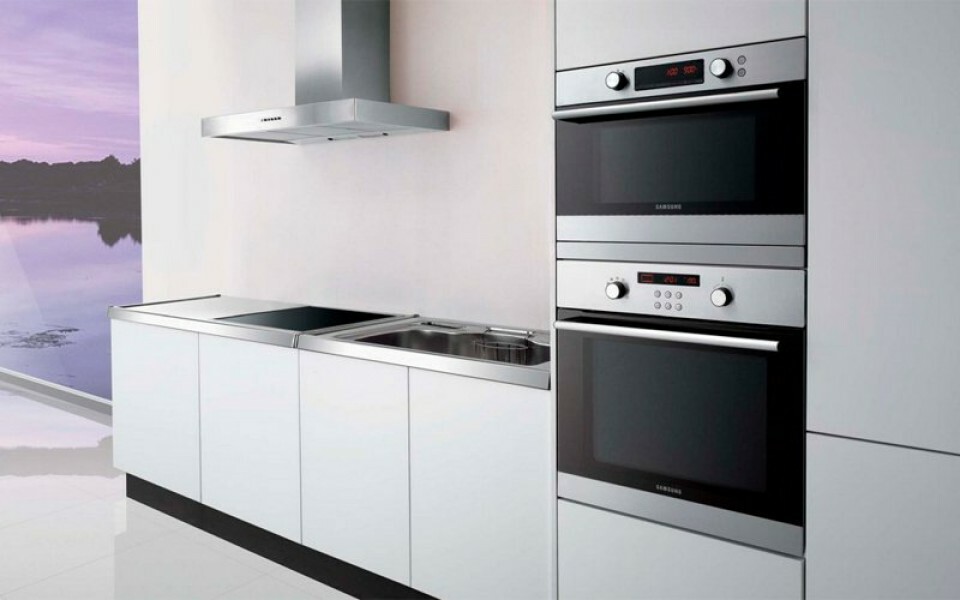
Dimensions of small ovens
The appliances in our kitchen should be not only high-tech and high-quality, but also convenient and practical. Thanks to the high quality of the equipment, the finished food will have an excellent taste and benefit our body. Practicality will simplify the management of equipment, ensure its ergonomics and convenient use. Do not overload a small room with oversized elements. It is necessary to correctly fit them into the interior, making sure that the baking technique does not "eat up" the space and does not make you bump into it every time you pass by. Therefore, compact built-in ovens are ideal for small spaces. Such chambers have a very modest capacity - only about 40 liters. You should not count on them when you need to cook a large amount of food, but they will quite cope with the requests of a small family.
As a rule, the volume of compact products is reduced by reducing the height - it is reduced to 45 cm. The width and depth are standard - 60x55 cm.
Another option, which is much less common, is narrow models. Their width decreases to 45 cm, while the parameters of height and depth remain unchanged - 60 and 55 cm.
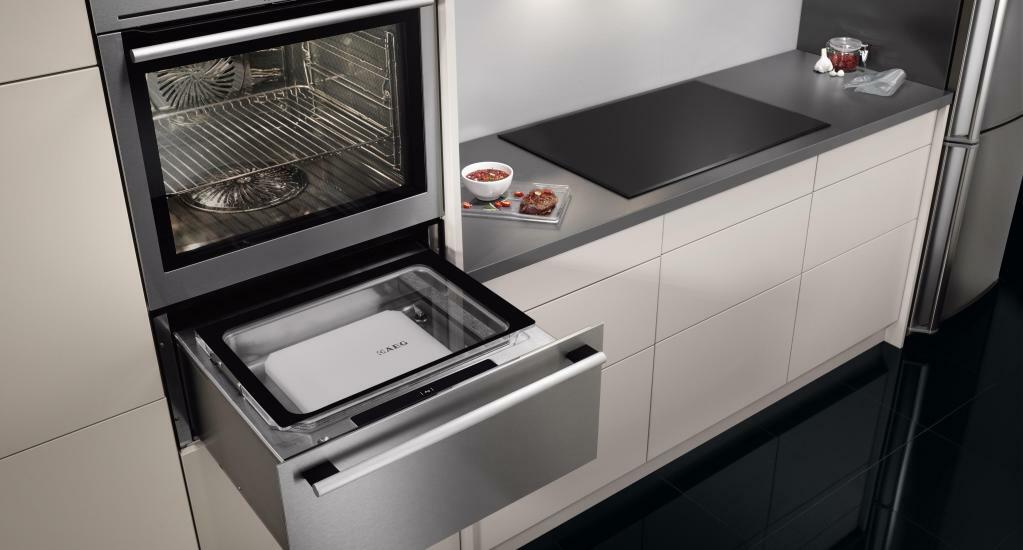
Ovens of non-standard sizes
All kitchens have individual parameters. It is very important to consider this point when buying an oven. The dimensions of household appliances can deviate from the standard both downward and upward. Owners of Khrushchev houses with small food blocks may prefer compact options. For spacious kitchens, as well as apartments where a large number of people live, it is better to choose oversized ovens.
Some models are equipped with a microwave function. Thanks to this option, you can refuse to buy a separate device and combine the two products into a single whole. This allows you to significantly save space and if homemade cakes are not a frequent guest on your table, then this option is definitely worth considering.
Another non-standard option is models with a height of up to 90 cm. They are equipped with two cooking compartments. The main compartment is large in size. The upper one performs a purely auxiliary function, allowing you to speed up the cooking process if necessary. It has only a basic set of options and differs in more modest dimensions in comparison with a more overall "neighbor" from below.
Ovens with non-standard heights. Let's highlight several main categories:
- devices with a height of 35-45 cm. The capacity of these cabinets does not exceed 50 liters. In this segment, there are models supplemented by microwave. This also includes compact desktop options;
- tall products - not less than 60 cm. Such parameters are often found in professional devices. Among these products are dual and free-standing devices.
Products with non-standard width
- Narrow - the width does not reach 50 cm, they can be easily hidden in a small closet. With a standard depth and height, they retain a fairly large volume, however, there are also small devices with a smaller volume for rare use.
- Wide - with a width of 90 cm. The rest of the dimensions remain standard. The capacity increases to 110 liters.

Dimensions of ovens with hob
Ovens combined with a hob are classified as free-standing appliances. They are built into a niche formed by elements of a kitchen set.
The standard oven height is 85 cm. This height allows the hob platform to be positioned flush with the worktop by means of adjustable feet. The width of the products is in the range of 50-90 cm. Oversized models will perfectly fit into the interior of a small kitchen. In spacious rooms, it is better to use wide roomy counterparts. The depth of such cabinets is most often 60 cm, but it can also vary between 50-60.
Standard products have dimensions 50x50, 50x60, 60x60 cm.
For small-sized kitchens, it is better to purchase separate gas, electric, combined stoves. The spacious rooms will perfectly accommodate built-in appliances.
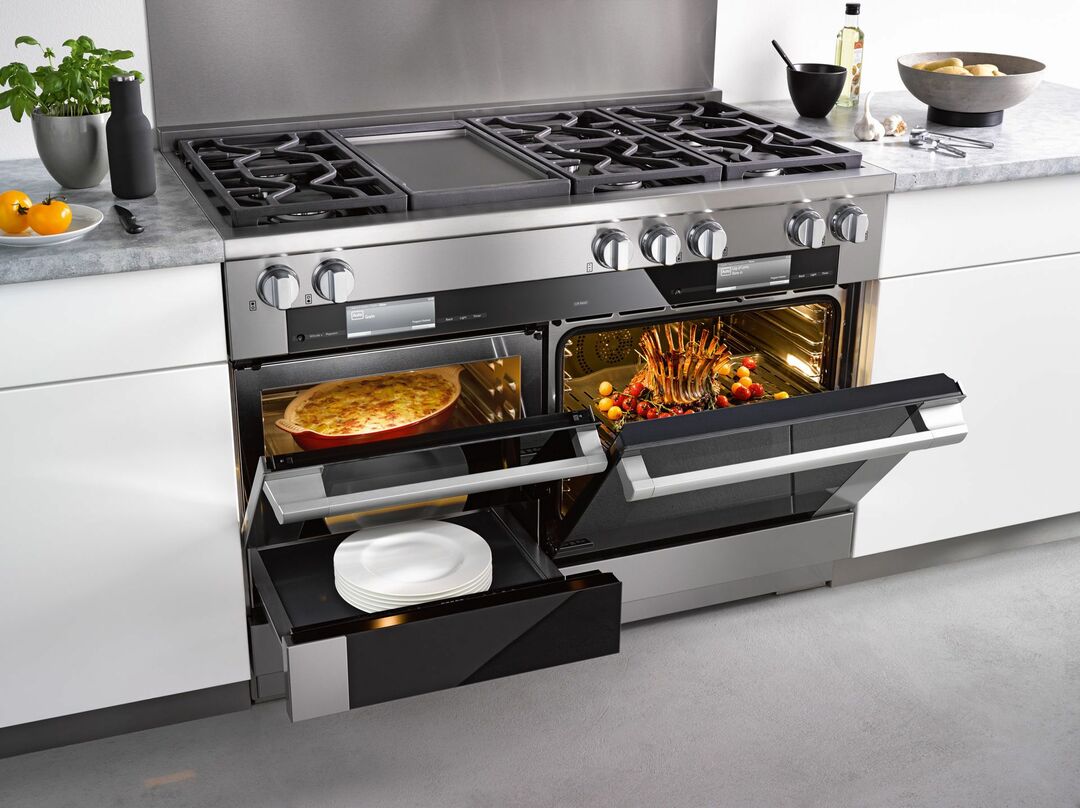
Niche and cabinet sizes for built-in ovens
In order to answer the question about the size of niches for built-in ovens, you need to highlight the main nuances of designing a box:
- the tabletop should have standard dimensions - its depth should be 60 cm. The box is made with a depth of 460 to 520 mm;
- if the project provides for a housing strip, it must be displaced 10 mm downward. A hob is often built directly above the oven, the depth of which can vary. Therefore, it can protrude from the bottom of the countertop and this must be taken into account;
- to install the oven, an opening of at least 568 mm is required. Therefore, the box must be 60 cm wide;
- the height required for building most ovens is 60 cm. An opening with a height of 595 mm is allowed.
Sockets, pipes and other similar devices should not be located on the wall section behind the cabinet.
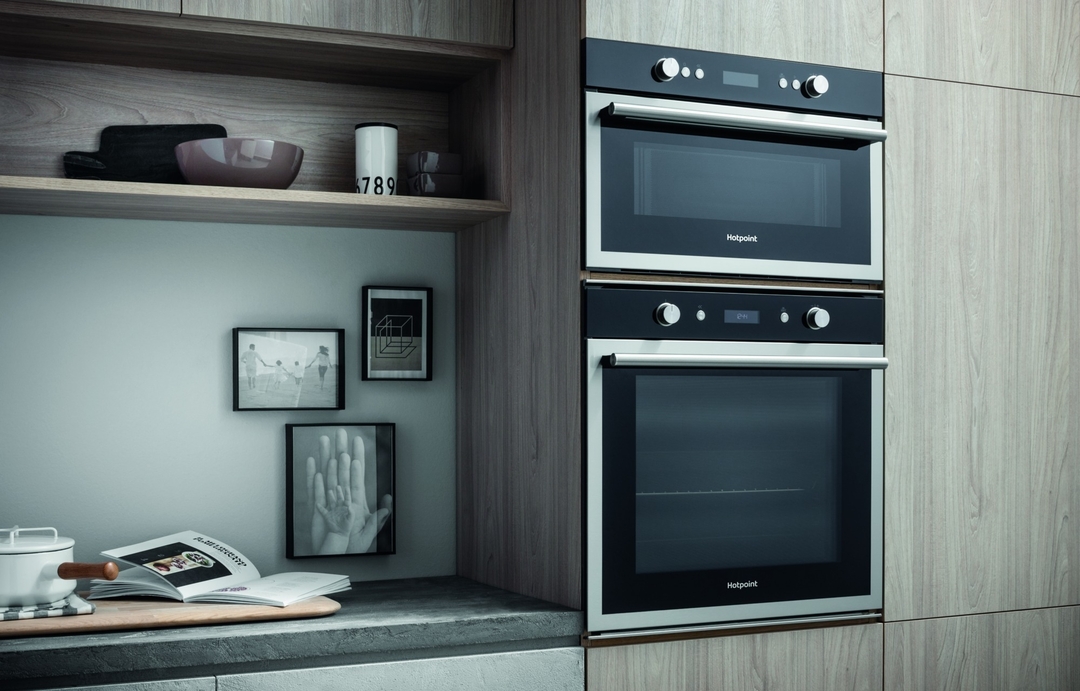
How and where to install
When installing ovens, the following conditions must be observed:
- placement of the device is carried out only on a flat surface, in which ventilation is provided to remove heat;
- small gaps should be left between the oven and the body for free circulation of air masses. The bottom gap to the floor should be 8-10 cm. A distance of 0.5-1 cm should remain to the side walls. At the back, the gap should be 4-5 cm;
- the height of the oven should be chosen in such a way as to exclude the possibility of scalding the face with hot steam. The control panel should be located not below the waist of a person and not above his eyes;
- the gas oven should be placed close to the pipes, leaving a free access to the gas fittings, the electric oven should be located close to the power source so that you do not have to use extension cords.
The main requirement for installation is compliance with instructions and safety rules.
Installation steps
- Training. It is necessary to check the wiring for resistance level, the presence of high quality wires with cross-section sufficient to provide the declared power, grounding wire, separate protective machine.
- Wire connection with screw terminals.
- Placement of the oven in the prepared compartment of the headset.
- Fixing the device with mounting screws.
- Washing the inner surfaces and calcining the product at a temperature of 150-200 degrees.
The above data will help you not to make a mistake when choosing an oven for your kitchen.

